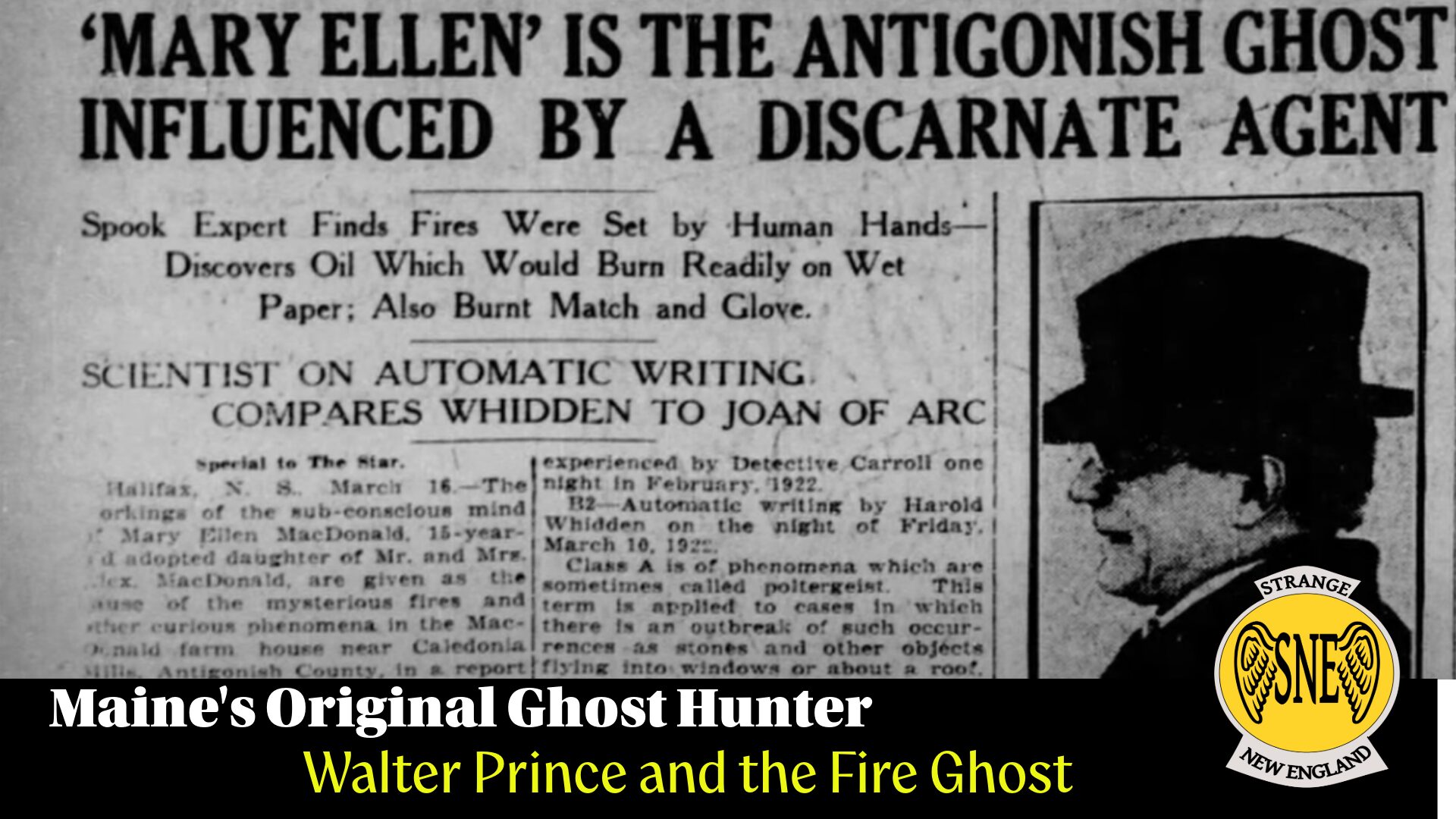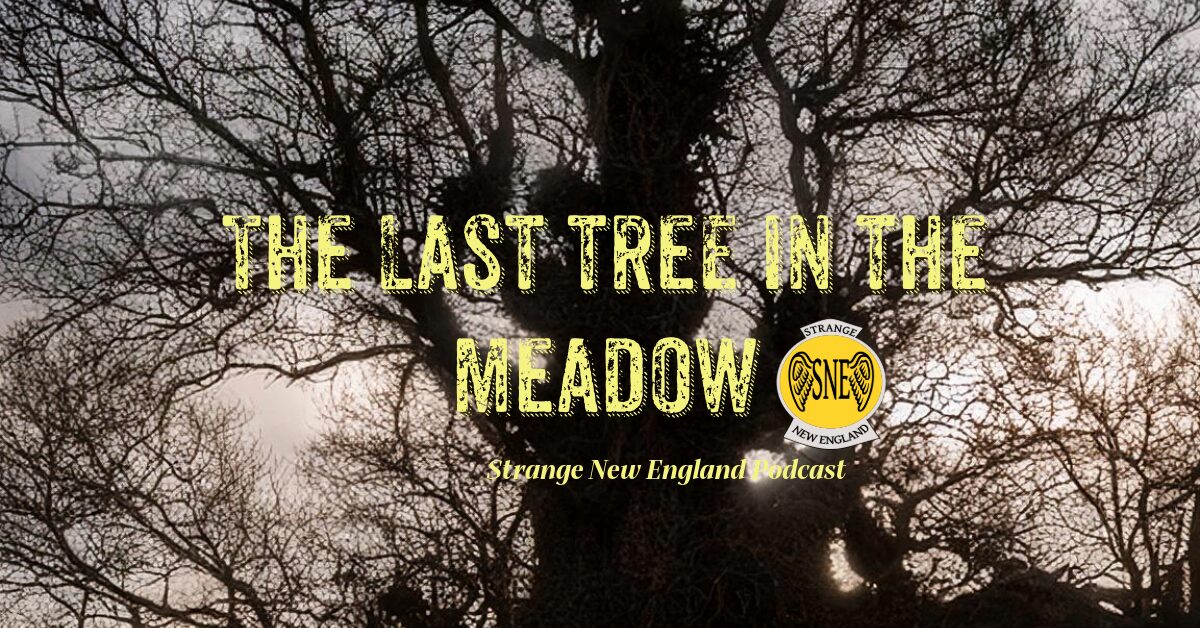
The cold wind blows across the empty fields. The trees have shed their rusted leaves and the moon plays hide and go seek with the thin and wispy clouds. It’s the time of year when night falls soon and you need an extra blanket on the bed to get you through the dark hours till morning. October is here and with it, the New England landscape dons a different coat, as though it too is bundling itself up against winter. If you’re easily startled, you might want to pull the curtains before going to bed and make sure the doors are locked tight. There are sounds in the darkness that leave you edgy. This is October and the hour is late. Time, perhaps, for a ghost story?
There are so many lost highways in New England. You see them as you drive past, little narrow ways that lead into the woods, dirt tracks that go on up and beyond and though you’ve driven past a hundred times, for some reason, you’ve never turned and explored where it goes. Has it ever occurred to you to ask yourself, why not? Roads belong to everyone, and therefore, no one. What better place to take a drive and see the fall foliage than a road less-traveled? But when the sun goes down, such roads might lead to different destinations than they do in the light. One such road exists in downeast Maine.
Case in Point. You might find yourself driving on a lonely stretch of road in Hancock County, Maine in Township 10 on Route 182 between Franklin and Cherryfield. This stretch of land is known as Black’s Woods. The world will be close. The fog will be low to the ground and the hour will be late. You find yourself on a small mountain, called a hill by the locals and you might chance to see a young woman standing on the side of the road in a place no one should be at such an hour. You will see her from a distance, long enough to wonder why she is there. Then, as your car approaches her you will see that she is dressed in a gown of a sort that is hardly seen today. Then you will feel compelled to stop and speak with her. It’s the least a decent human being would do on such a night at such an hour.
You might roll your window down as you pull up to her. That’s when you’ll see the dark eyes, the incessant stare, the long, black hair and a face that is both beautiful and terrifying. You feel the hairs on the back of your neck begin to rise but you will speak to her, asking if she needs any help.
That’s where the story takes on many different forms. This specter might ask for a ride to Bar Harbor, for it seems she is intent on making an appointment there. You might have her get in and then start driving only to notice she is no longer in the car with you, but directly on the road in front of you. You might be lucky – she might stay in the car, for awhile. You’ll talk to her nervously, though she doesn’t answer back. You’ll cast your eyes from the road to her, only to find it empty, with nothing but a puddle of cold water on the seat she occupied. But you will be allowed to go home, to make it safely back to your bed where you won’t sleep because you’ve just had an encounter with the inexplicable. But you’re alive, thank God.
Her name, according to the folklore of the region, is Catherine. The hill has been called Catherine’s Hill for time out of mind, predating automobiles. For over a hundred years people from the area have passed down the stories, told to them by some old family member or friend, of an encounter with the ghost girl who haunts the side of the road. In some tales, she is headless, having been decapitated by an accident that took her life. Some say she died while she and her newly married husband were on their way to Bar Harbor for a honeymoon. Some will tell you that she was killed on her prom night. Ghost stories have a way of adapting to the times in which they are told – an old tale will take on new accouterments, become modernized, even though the original tale might have been told by the very earliest of people, the Native Americans. In his excellent book of ghost stories from Downeast Maine Dark Woods, Chill Waters (Downeast Books, 2007) , Marcus LiBrizzi details variations of the death of this young woman. One such story tells of a night in the 1920s during Prohibition when wealthy flatlanders would come to Maine to run whiskey. There is a perfectly preserved Model T ford in the bottom of nearby Fox Pond that becomes incorporated into her story. She and the driver must have been going too fast, taken a bad turn, and somehow found themselves in the cold dark waters of the Pond, only to rise again as phantoms. Well, Catherine at least.
The stories about her persist. The local Bangor Daily News ran a front page article about her. There are Youtube videos that tell of a musician named Dale Whitney whose encounter is usually thought of as the quintessential Catherine tale. It goes like this: Whitney is rising home alone after a gig in Bar Harbor and sees her standing on the side of the road. He stops and asks if she needs help. She speaks, “I need a man to take me to Bar Harbor.” He begins to feel that this is all wrong. Then he takes a good look at her and find that she is transparent. He answers, “I just came from there,” and slams his foot on the gas, in near panic. Just a way down the lane, he stops and his humanity kicks in. He must have been seeing things – it was late and he was tired. He turns around to find her and give her that ride, only to discover that she is nowhere to be seen. There were no other cars on the road. There was no where for her to go. But she was gone. The next day on another journey along the same road, he comes upon an accident: an overturned van, totaled beyond repair. No one could have survived. Whitney wonders, as the tales have foretold, if that van had seen the ghost but just kept driving. You must stop and ask if you can help, otherwise, Catherine’s ghost will see to it that the curse is enforced. Perhaps by going back and looking for her, Whitney’s humanity allowed him to survive. Perhaps?
So the story goes. Ghost stories persist. They are the ones passed down from generation to generation. In the case of Catherine’s ghost, the requirement of offering help perhaps serves as a cautionary tale: even the dead need help and by offering to help Catherine, you are reminded of the value of being alive in the first place. Plus, it makes a great story on a cold and rainy night when, of course, you’re safely in your home where everything is as it should be.
RESOURCES
LiBrizzi, Marcus A. Dark Woods, Chill Waters: Ghost Tales from Down East Maine. Down East Books, 2007.
https://en.wikipedia.org/wiki/Catherine_Mountain
http://bangordailynews.com/video/the-story-of-catherines-hill/




